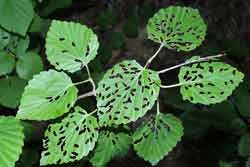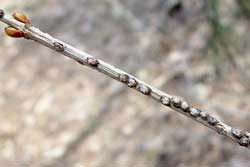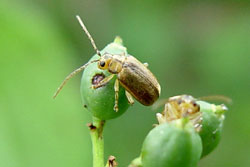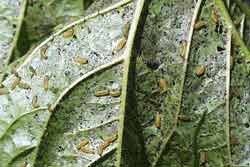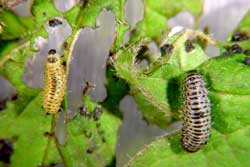Viburnum Leaf Beetle—Pyrrhalta viburni
The viburnum leaf beetle is native to Europe and has become a serious pest of viburnum plantings and nursery stock in the Northeast United States. Both the larvae and adult feed voraciously on the foliage; heavy infestations can defoliate shrubs, cause dieback, and eventually kill plants. Viburnums include cranberrybush, hobblebush, arrowwood, nannyberry and snowball bush.
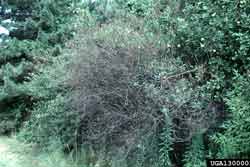
Ornamental shrub (Viburnum sp.) with heavy defoliation due to larval feeding damage (in May) in central New York.
Click on images to view full-size
Identification and Control Information
- Viburnum Leaf Beetle: Citizen Science (comprehensive information)—Cornell University
- Entomological Notes : Viburnum Leaf Beetle (PDF)—Penn State College of Agricultural Sciences Cooperative Extension
- Pest Alert: Viburnum Leaf Beetle (PDF)—Massachusetts Department of Agricultural Resources
- Pest Alert: Viburnum Leaf Beetle (PDF)—New York Cooperative Agricultural Pest Survey
- Exotic Pest Threats: Viburnum Leaf Beetle (PDF)—Maryland Cooperative Extension
[Photos, left to right: E. Richard Hoebeke, Cornell University, Bugwood.org; Paul Weston, Cornell University, Bugwood.org; Paul Weston, Cornell University, Bugwood.org; Paul Weston, Cornell University, Bugwood.org; Paul Weston, Cornell University, Bugwood.org]
